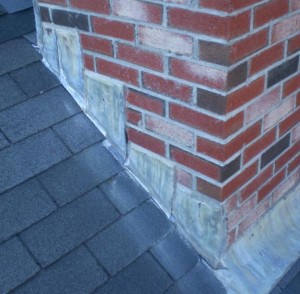
Texas Building Codes – Flashing Requirements
For your convenience, I have listed list the international building codes for one and two family homes below. To view photos and examples of flashing issues as they relate to the Texas building code, please refer to my newsletter on flashing problems in homes.
International Building Code Section R703.7.5 Flashing
Flashing shall be located beneath the first course of masonry above finished ground level above the foundation wall or slab and at other points of support, including structural floors, shelf angles and lintels when masonry veneers are designed in accordance with Section R703.7. See Section R703.8 for additional requirements.
International Building Code Section R703.7.6 Weep holes
Weep holes shall be provided in the outside of masonry walls at a maximum spacing of 33 inches (838 mm) on center. The holes shall not be less than 3 /16 inch (4.8 mm) in diameter. Weep holes shall be located immediately above the flashing.
International Building Code Section R703.8 Flashing
Approved corrosion-resistive flashing shall be provided in the exterior wall envelope in such a manner as to prevent entry of water into the wall cavity or penetration of water to the building structural framing components. The flashing shall extend to the surface of the exterior wall finish and shall be installed to prevent water from reentering the exterior wall envelope. Approved corrosion-resistant flashings shall be installed at all of the following locations:
- At top of all exterior window and door openings in such a manner as to be leak proof, except that self-flashing windows having a continuous lap of not less than 11/8inches (28 mm) over the sheathing material around the perimeter of the opening, including corners, do not require additional flashing; jamb flashing may also be omitted when specifically approved by the building official.
- At the intersection of chimneys or other masonry construction with frame or stucco walls, with projecting lips on both sides under stucco copings.
- Under and at the ends of masonry, wood or metal copings and sills.
- Continuously above all projecting wood trim.
- Where exterior porches, decks or stairs attach to a wall or floor assembly of wood-frame construction.
- At wall and roof intersections.
- At built-in gutters.
Needless to say, I have only scratched the surface on Texas building codes and practices, and the issue of residential construction flashing. The idea is make you aware of just how important it is. I believe that it is far and away the most overlooked component of construction today. As our systems get more and more complicated, it seems that pride in construction has become less common. It is up to me to try and help you and the builders understand the importance of quality construction. It is up to you to be aware of these issues so that you can monitor or correct them in your own homes and hopefully avoid more serious issues in the future.
If you have a question about Texas Building Codes or the 2000 International Dwelling Code, please contact Advanced Inspection Service at (972) 342-9183.